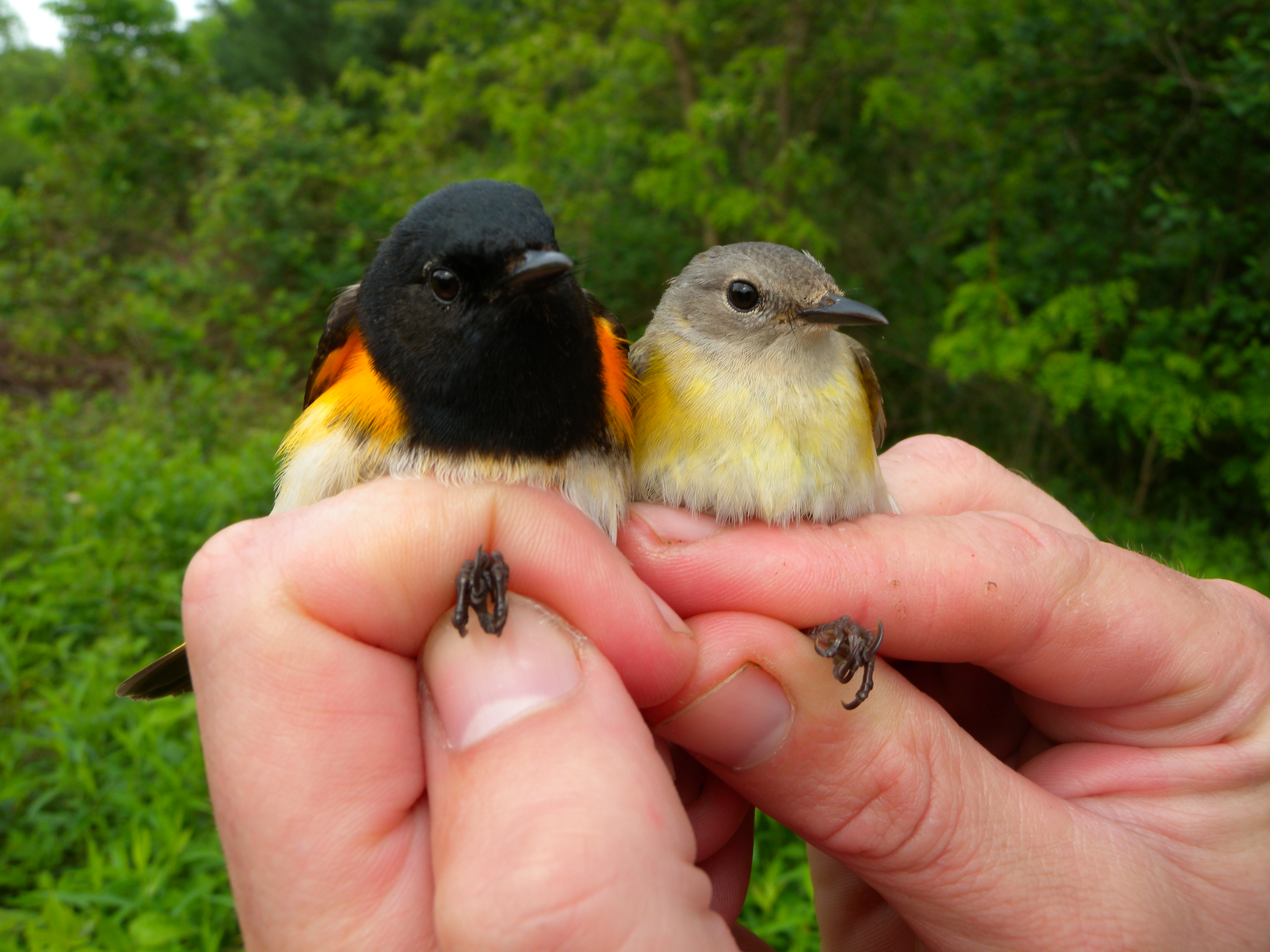Bird banding has been around since the 1950s as the authoritative technique for monitoring bird populations and studying their movements, lifespan, and ecology. The first thing people usually ask when they observe mist netting and bird banding for the first time is something to the effect of, “Do the birds get hurt?”

Trained bird banders have handled hundreds or thousands of birds and know exactly how they can and cannot handle the bird in order to avoid injury. In addition, banders are constantly monitoring external conditions and do not hesitate to close nets that are exposed to strong wind gusts, rain, extreme temperatures, direct sun or predation. Mist nets of the correct gauge are a very safe way to catch birds; they hit the soft net and are then cradled in a pocket where they remain until the bander arrives and extracts them as quickly and safely as possible using specific techniques. Good banders are also always monitoring the birds’ health status in the hand; signs of stress include “crowning” (meaning the feathers on the head are sticking up) or “fluffing” (when all the body feathers are fluffed out), “winking” (when the birds eyes are closing), or panting (when the bird’s mouth is wide open attempting to cool off). If a bird seems too stressed, we either let it go after banding without processing it (lightly referred to as “ringing and flinging”) or we streamline the process to only include vital information such as weight, wing cord and band number.
Unfortunately, every once in a while a bird may get injured, often while thrashing around too much in the net. Birds are miraculous creatures though, and they heal much faster and more successfully than people! It’s not uncommon for banders to catch a one legged bird year after year that is doing well and breeding. Deaths are more seldom than injuries and usually occur because the bird was already in poor condition when the bander received it. This is common during migration for tiny birds like Wilson’s Warblers and Ruby Crowned Kinglets that didn’t have enough fat reserves for the long journey.

Ultimately, the contributions of bird banding to our understanding of birds and their conservation greatly outweighs the risks to individual birds. You can rest assured knowing that most bird banders love birds even more than they love science and are not willing to sacrifice the life of even one bird simply for the sake of science.
We thought you might be interested in this Conservation Magazine article about the risks of injuries to birds during banding. Finally, banders have scientific evidence to prove that bird banding is indeed safe for the birds. Thanks for sharing, Lisa!

Last, but not least, please don’t forget to invite your children or any that you know (ages 8-12) to next week’s PA Young Birders meeting at Rushton Farm, “The Birds and the Beaks”: Wednesday July 13th, 6:00-7:30pm. Junior birders will learn about fascinating bird beaks and eating habits, and they will study how each bird is perfectly adapted to obtain and eat specific foods. Then the children will be transformed into birds themselves and experience what it really means to “eat like a bird…”
Hope to see you there!
Baby Birdie Blog coming soon…
~Blake

